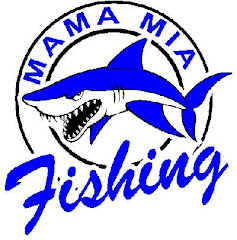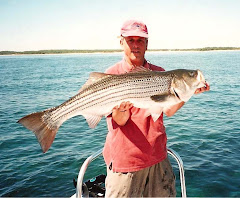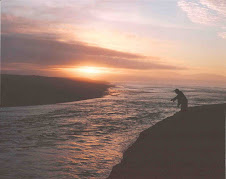I returned recently from a few days on the west coast of Florida where I was totally harassed by some large tarpon. I fished with Captain Nick Angelo of Tampa, who guided me to my fair share of shots at these magnificent fish. Catching these oversized, prehistoric herring on the fly can be a daunting and humbling task. While I have had success in getting tarpon to the boat using fly-fishing gear, that objective was not achieved this time. I did manage to stick flies into the bony maws of three “poons”, and I did jump a one hundred-pound plus fish. But in the end, the quarry won! Consistent success at this game requires a resolute will, patience and unyielding determination; success is often measured in small victories. The challenge is to place the fly in the path of oncoming fish, often moving at high rates of speed across open sand and grass flats. The fly must be presented at a correct angle so that it crosses the path of the tarpon in a natural way. This involves leading fish with the cast, much as a quarterback leads a receiver. Easier said than done! Despite their size, tarpon are surprisingly wary of anything – including flies- that comes at them from an unnatural direction. Once the fly is cast and allowed to sink to the level of the fish, long, steady retrieves should get it to intersect the fish’s route and capture its attention. Should the fish react to the fly in a positive way, chalk that up as a minor victory. But this is where the real fun begins. When a big tarpon tracks a fly in thin water it is tough to maintain one’s composure while watching the drama unfold! I can vouch for that from personal experience. Buck fever pales in comparison to this deal! But the fly must continue moving along steadily and in a way so as to maintain the “beast’s” interest. Sometimes, tarpon will nose the fly or bump it. This is when one’s self control needs be at its peak. Often, a break in the retrieve with either a slight pause or some form of subtle seduction - like jiggling the fly with the rod tip - can excite and stimulate the fish. The goal at this stage of the presentation is to make the fly look alive - to get the tarpon to want to eat it. If the fish actually does inhale the fly, consider that another minor victory, or perhaps even a small miracle! When it does eat, one of two things will happen. The strike will either be an unmistakable, bone-jarring smash or a take so subtle you will think a small sea trout may have mouthed the fly. This latter strike is where it gets tricky. The natural inclination is to lift the rod. That is a big mistake! I’ve been there too! At this point in the game one needs to keep the fly in motion, even if you see the take and the accompanying flash of a turning fish. The key is letting the line go completely tight, as if you were hung up on a log. Once that happens, a few strip strikes just might seal the deal. If the fly angler makes it this far, congratulations on a job well done. But the mission is far from accomplished for this is when the difficult work begins. Tarpon can pull as hard as a Mack truck, and they will go missile ballistic as airborne acrobats. Should the fish choose to stay low and deep, just settle in for a long, hard fight. If you hook a flyer, all sorts of nasty things can happen. But that is a story for another time.
When the tarpon frustration levels reached their zenith on my trip, I worked off the excess stress by throwing flies to snook in the mangroves, permit on the points and bars, small grouper on the rocks, and tons of little tunny! Not a bad release valve!
A weekly blog dedicated to fly-fishing the waters of Long Island and other world-class destinations.
About Me
- AP
- Following a long and fulfilling corporate career I moved on to pursue other interests as a full time outdoor journalist, book author, photographer and lecturer. I am also a strategic managment consultant involved in the outdoors, recreation and lesiure time industries. Fly fishing is my favorite pastime but I enjoy all forms of fishing and traditional outdoor activities. When I am not writing you will most often find me exploring my home waters of the Long Island Sound. I am equally as comfortable on a tidal creek in the wilderness of the Alaska Peninsula, or on a Gulf Coast flat or in the waters of a free flowing river. I love to wade, fish from a boat and kayak. If I couldn't fish, my life would not be complete. And should the day ever come when I no longer enjoy catching diminutive bluegill, I will part with all my gear and take up a new sport. Professional Affiliations: Outdoor Writers Association of America; New York State Outdoor Writers Association; Professional Outdoor Media Association; Association of Great Lakes Outdoor Writers. For further information please refer to my website at www.angelopeluso.com
Welcome and Enjoy
Welcome to AP's Fly Fishing Journal, a weekly blog dedicated to the pursuit of fly-fishing. Our focus will be the waters of Long Island and other world-class destinations. Whether you are a novice, intermediate or advanced fly angler, this space will be devoted to topics of interest and value to all who pursue game fish with the long wand. Topics covered will include fly-fishing commentary, fly tying, products and any and all issues relevant to today’s avid fly angler. If you are inclined to cast flies to fish , let this "journal" be your weekly guide to a rewarding time on the water. I will cover saltwater and freshwater, the beach and boating beats as well as the increasingly popular kayak fly-fishing scene. And we will look east and west, north and south - wherever fly anglers roam. I hope you enjoy my offerings. Thank you for stopping by.










